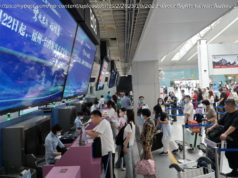Array
SUBIC Once-secret ammunition bunkers and barracks lay abandoned, empty and overrun by weeds — vestiges of American firepower in what used to be the United States’ largest overseas naval base at Subic Bay in the northern Philippines.
But that may change in the near future.
The U.S. has been taking steps to rebuild its military might in the Philippines more than 30 years after the closure of its large bases in the country and reinforcing an arc of military alliances in Asia in a starkly different post-Cold War era when the perceived new regional threat is an increasingly belligerent China.
On Feb. 2, the longtime allies announced that rotating batches of American forces would be granted access to four more Philippine military camps aside from five other local bases, where U.S.-funded constructions have picked up pace to build barracks, warehouses and other buildings to accommodate a yet-unspecified but expectedly considerable number of visiting troops under a 2014 defense pact.
Manila-based political scientist Andrea Chloe Wong said the location of the Philippine camps would give the U.S. military the presence it would need to be a “strong deterrent against Chinese aggression” in the South China Sea, where China, the Philippines and four other governments have had increasingly tense territorial rifts — as well as a potential Chinese invasion of Taiwan, which Beijing views as its own territory to be brought under Chinese control, by force if necessary.
Around the former U.S. Navy base in Subic, now a bustling commercial freeport and tourism destination northwest of Manila, news of the Philippine government’s decision to allow an expanded American military presence rekindled memories of an era when thousands of U.S. sailors pumped money, life and hope into the neighboring city of Olongapo.
“Olongapo was like Las Vegas then, » Filipino businessman AJ Saliba told The Associated Press in an interview in his foreign currency exchange and music shop along what used to be Olongapo’s garish red-light strip.
“Noisy as early as noon with neon lights turned on and the Americans roaming around. Women were everywhere. Jeepney drivers, tricycles, restaurants, bars, hotels — everybody was making money — so if they will return, my God, you know, that’ll be the best news,” he said.
U.S. Defense Secretary Lloyd Austin said during his visit in Manila last week that Washington was not trying to reestablish permanent bases, but that the agreement to broaden its military presence under the Enhanced Defense Cooperation Agreement was “a big deal.”
Visiting American military personnel could engage the Philippine military in larger joint combat-readiness trainings, provide help in responding rapidly to disasters and press efforts to help modernize Manila’s armed forces, Austin and his Philippine counterpart Carlito Galvez Jr.






